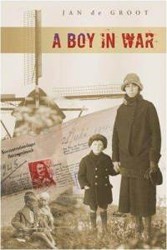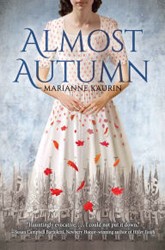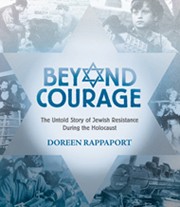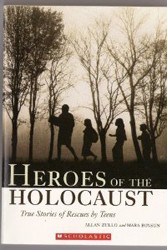Whitwell, Tennessee is a small town nestled in the Sequatchie Valley near Chattanooga. With a population of only 1,600 people, it is a very homogeneous community, as there are no Catholics, Muslims, Jews or foreigners. Linda Hooper, the principal of Whitwell Middle School, felt this was a serious disadvantage for her students: if everybody in the community had similar backgrounds, how would these emerging teens learn to cope in the real world, especially if they encountered people who were different? In 1998, Hooper decided to launch a volunteer, after-school project where, under the direction of eighth grade teacher Sandra Roberts, the students would learn about the meaning of the Holocaust and intolerance. To grasp the idea of six million, the number of Jewish victims of the Holocaust, the students decided they needed a visual for this incomprehensible number and chose to collect paper clips. This was the perfect item, since they found in their research that during the war, paper clips were worn by non-Jewish Norwegians on their lapels as a sign of silent protest. As the students began gathering paper clips and exhausted their own families’ collections, a website was created to ask for help. Two German reporters picked up the story of these extraordinary students, and the “paper clip” project became bigger than life. Paper clips came pouring in with letters, poems, drawings, and artworks. The children finally reached their goal and eventually collected over 30 million paper clips, and wanted never to forget what this emotional, eye-opening experience had taught them. After a painstaking search, a German railcar used to transport Jews to the camps was found and shipped to Whitwell; six million of the paper clips are housed in the railcar and serve as a living memorial to all who were lost under the tyranny of the Nazi regime. Dedicated on Nov. 2, 2001 as the Children’s Holocaust Memorial, many school groups have visited this site and learn from the Whitwell students what they can do to combat intolerance.
This small, non-fiction gem, which at first appears very simple, is multi-layered and complex. A single idea from a small town grew from a tiny trickle to a project that crisscrossed the nation and made quite an impact on the world. Illustrated with many photographs of the town of Whitwell, the students involved with this project, and various artifacts, it is difficult to read this book and be unmoved. With contrasting bright orange, black and white pages, the text is artistically arranged and very inviting. An added symbolic element of interest is the edge of each page, which is decorated with paper clips; at the beginning of the book there is only one, but by the end there is a whole chain that runs the bottom of the page! An index, list of all students involved, and short biographies of all the teachers help to bring depth to the story. Recommended for ages 8 – 14.





